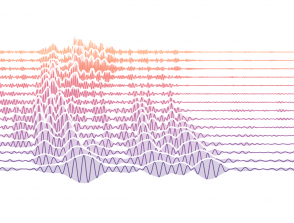Time-lapse seismic imaging of Mount Fuji
Début : 01 février 2025
Fin : 31 janvier 2028
Encadrants :
Nobuaki Fuji, Stéphanie Durand
Équipes liées :
Sismologie
Statut : En cours
Mount Fuji has been dormant for 300 years, with no significant eruptions, gas emissions, or ground uplift. This has led many volcanologists to underestimate the importance of the monitoring of this volcano. An eruption in Mount Fuji would be a disaster, affecting millions of people, and causing billions of euros in damage. In order to make ourselves better prepared, it is important to i) construct a real-time monitoring/warning system; and ii) to foster the understanding the dynamic process inside and underneath Mount Fuji, with the aid of the local seismic array.
As a first step, an effective early warning system based on artificial intelligence (AI) is being developed within the PhD project, entitled “AI-based Seismovolcanic activity monitoring of dormant volcanic systems” conducted by Adèle Doucet (2023-), under the supervision of Jean-Philippe Métaxian, Léonard Seydoux, Yosuke Aoki (ERI, U. Tokyo) and Nobuaki Fuji.
In this PhD project, we will thus tackle the second axis: physical/dynamic interpretation of seismic signals by seismic imaging of the inner structure beneath the volcano and seismic inversion for local events (tectonic and low-frequency earthquakes).
In this project we will first reveal the detailed structure (∼5 km of resolution) of the interior of the dormant volcano by using localised waveform tomography, which has never been done before (e.g., resolution of > 10 km with previous finest travel-time tomography:1). The “back projection” method using the whole resolution matrix should be applied to image 4D source mechanisms, which could localise and image the magma migration. The direct link between these 4D mechanisms and volcanic activities will be further studied via comparative volcanology, which will be a breakthrough in this domain of study.





